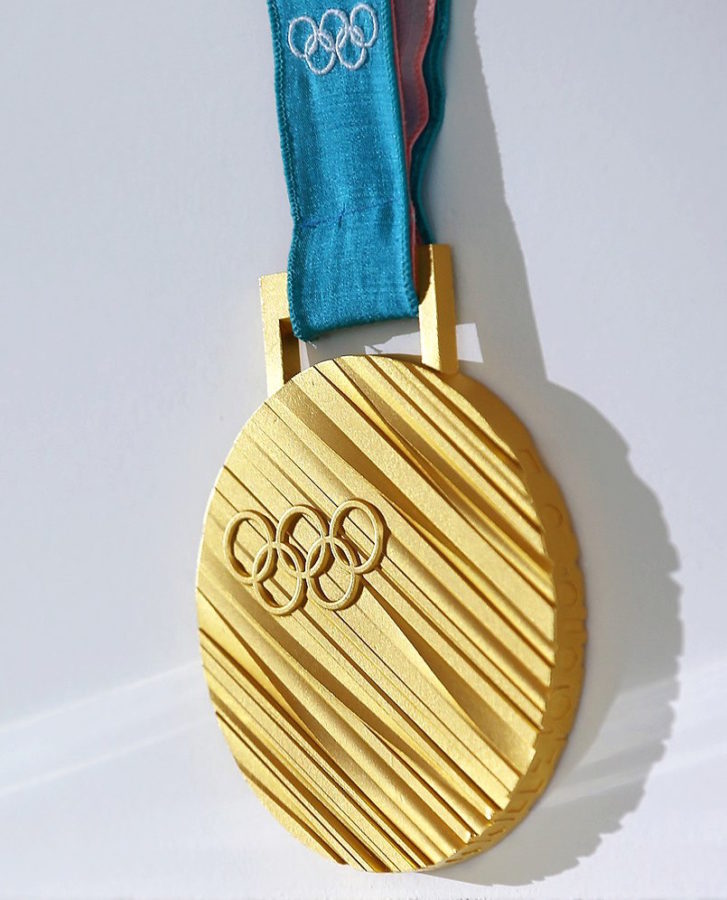Top 3 Must-See Winter Olympic Disciplines
Gold medal from the 2018 Winter Olympics in Pyeongchang. Labeled for reuse under Wikimedia Commons.
The 2018 Winter Olympics in Pyeongchang, South Korea have official kicked off with the opening ceremony held last Friday. While everyone’s focused on the tiresome political aspect of North Korea’s involvement and their strange cheerleaders, I’d like to talk about the important stuff. Everyone lives a busy lives these days, so time is of the essence. If you could only have time to watch 3 Winter Olympic disciplines, here are the top 3 that are sure to leave your heart pounding.
Top 3 Most Exciting (Must-See) Disciplines
1. Freestyle Skiing/Snowboarding (Gold) – I combined skiing and snowboarding because the debate is quite subjective as to which is better than the other. The most important part, however, is the freestyle aspect. It’s impressive to see top level athletes ski through thick moguls or ski uphill for several kilometers, but it is much more exciting to see athletes huck quad-corks off of a jump the size of a large house or fight for first in a death-race down the mountain. Some of the most exhilarating events are offered for both skiers and snowboarders, including slopestyle and half-pipe.
Slopestyle involves a run that begins with many park features like rails, jibs, and some lips and ends with a sequence of three large jumps. Half-pipe, as the name suggests, involves a half-pipe of hardened snow that skiers or snowboarders jump out of and back in… out and in… catching several meters of air while spinning and flipping.
Exclusive to skiing is the aerials event, where skiers take off of a steep ramp and jump nearly 20 meters (65 feet) in the air while throwing all sorts of tricks. Big air is an event exclusive to snowboarding and involves snowboarders catching “big air” off of a single massive jump that launches the boarders nearly 100 feet in distance. As you can imagine, this gives the boarder plenty of air time to throw crazy tricks like quadruple corks or quad-underflips.
2. Skeleton/Luge (Silver) – Whether on their back (luge) or stomach (skeleton), these athletes absolutely speed down the ice track, sort of like extreme sledding. In fact, luge is the fastest sport on ice; elite lugers can reach speeds of up to 100 mph. With such high speeds come risk for injury, or even death.
Not only must the athletes make turns at these high speeds, but they also do so while barely being able to see the course. Leading their head back in order to be more aerodynamic, luge athletes are forced to look out of a small bottom portion of their visor. With all these dangers, accidents can be catastrophic. For example, in the 2010 Winter Olympics, Georgian one-man luger Nodar Kumaritashvili died in a training run when an accident on a turn caused him to eject out of the ice track and smash into a concrete pole at 90 mph.
Skeleton athletes go slower than the average Olympic luger, but they also go head first down the track. In the event of an accident, the slight reduction in speed doesn’t make it safer when the noggin is the first body part to get hit. Yet, the same high speeds that make these disciplines dangerous also make them exciting to watch.
3. Ice Hockey (Bronze) – Hockey is one of the most aggressive and well-known winter sports. It is no surprise that ice hockey at the peak Olympic level is full of fast-paced action. In the past, NHL players made up almost all of the top Olympic teams. In fact, in the 2014 Winter Olympics, all but one player on the three medal-receiving hockey teams (Canada, Sweden, and Finland) were from the NHL.
However, this year’s Olympics will not be like the last. The NHL announced last year that they will not be participating in the 2018 Winter Olympics in Pyeongchang. This means that the ice hockey rosters this year are full of new faces going for glory. These new players will give it their all to make their names known and bring home a medal for their country.
You won’t want to miss these action-packed events!

Shalom le'kulam, my name is Jonathan Flat and I am the Managing Editor for this outstanding school newspaper. As a 16-year-old in the 12th grade, I'll...



